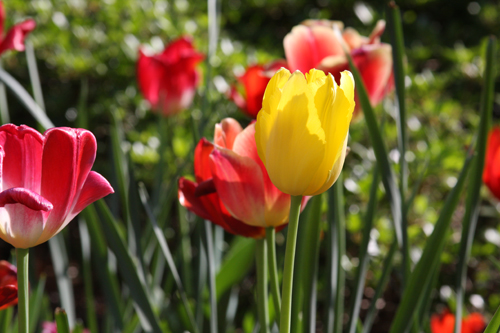Georgia’s green industry has suffered for several years under the strain of drought and related water restrictions. Continued economic woes, especially in the troubled housing industry, dampened recovery. But the future looks sunnier, according to a University of Georgia economist.
In 2008 and 2009, Georgia lost one-third of its garden and landscape businesses, reports UGA agricultural economist Forrest Stegelin in the 2010 Georgia Agricultural Forecast, a collection of economic outlooks published annually by the College of Agricultural and Environmental Sciences.
Many of the closed operations were bought by others, he said. Actual growing capacity in the state to meet consumer demand decreased by 25 percent, he said.
Growing response
The total wholesale value of floriculture and nursery crops in 2009 is expected to be 2 percent less than in 2008, he said. Large businesses with sales exceeding $100,000 will likely decline the most in Georgia. These larger operations produce 80 percent of the total farm-gate value, but account for less than 25 percent of all operations. Herbaceous perennials, foliage and cut flowers suffered the biggest declines in sales.
Many small operations shifted from specialized, higher-priced, more-profitable plants to lower-valued annual bedding and garden plants grown in pots or flats, which consumers could afford. Some switched to value-added flowering hanging baskets. Regardless of the plant mix they marketed, the prices growers got were low in ‘09, but their costs to produce things were high, resulting in lower profit margins, he said.
Looking up
“Georgia’s grower-wholesalers should realize a 1.5- to 2-percent growth in annual revenues for the next few years, perhaps through 2015,” Stegelin said. “A very stable forecast that is minus the volatility of the past decade.”
As the U.S. dollar depreciates, he expects import competition to decline. A weak U.S. dollar makes U.S. products more affordable to global consumers. Increased consumer spending and gardening activity will stimulate demand, but weather and unusual temperatures affect production and consumption habits.
In their annual trends report released in mid-November, the public relations firm Garden Media Group found Americans will focus on home in 2010. “Our relationship with money has changed,” said Susan McCoy, trend spotter and outdoor living expert. “Hard work, common sense and a return to small-town values are causing a shift in priorities from boardrooms to backyards.”
That’s good news for the industry, Stegelin said, but it should be cautious.
“As Georgia’s green-industry businesses pull themselves up by their bootstraps, exiting the recession, there are key sensitivities and success factors they should keep in mind,” Stegelin said.
For growth to happen, he said, the industry needs to:
- Get premium nursery plants and floriculture to buyers in premium markets where prices are highest.
- Have favorable weather conditions that lift crop yields and quality.
- Identify and market to offshore customers, reducing dependence on local markets.
- Maintain appropriate facilities and proper growing conditions for quality products.
- Overcome water access issues that can impact the quality of their products.
Stegelin is confident Georgia’s green industry can weather the recession storm.
“But, all in all, the green industry is expected to be minimally affected in 2010,” he said. “The sun should be rising on the economic horizon, not setting, for the years ahead.”










